ChezDaJez
Posts: 3436
Joined: 11/12/2004
From: Chehalis, WA
Status: offline

|
quote:
I think 4E bombers could be toned down a bit, both in terms of their availability (Op Tempo), and their lethality against CAP. How much? I really don't know. I am looking at it though.
Aggressive Fighter leaders will have the effect of exposing their unit to more 4E bomber defense than an non aggressive one. The desired effect of collective bomber defense is to see more fighters turn away due to effective fire than to see them shot down. In reality way more enemy fighters were claimed by bomber gunners than were ever shot down. It's a fact. It was also a morale issue. You WANTED your gunners to believe they were effective...
I agree that the availability of 4Es for missions is probably a bit too high. The 8th AF in Britain seldom had an availability rate exceeding 60-70% and that was with good airfields and good spare parts availability.
In terms of effectiveness vs CAP, Emmanual Gustin has conducted some pretty good studies. Mush of his work is derive from the European theater but it is also germane to other theaters. I've quoted some of his work below:
quote:
Even the best all-round armament was never enough. Deep penetrations in German territory turned out to be extremely costly. The most famous examples are the attacks on Regensburg and Schweinfurt: The first attack, on 17 August, resulted in the loss of 60 bombers out of a force of 363. Some consolation was found in the claims by the gunners, which amounted to a total of 228 enemy fighters shot down; even after careful evaluation of claims the 8th AF estimated the German losses to be between 148 and 100. In fact the Luftwaffe had lost only 25 fighters. A repeat attack on 14 October gave a confirmation, if any was necessary: 65 more B-17s were lost. The initial claim of enemy fighters downed was even higher than in the first attack, 288; but even the official figure of 104 was way above the real German loss: 35. (See Note 3.)
The infamous attacks on Schweinfurt were not unique. They were merely the most serious in a long series of disasters for the 8th AAF. In 1943, it was clearly losing the battle with the German fighter defenses.
Why did the heavy bombers fail? Apparently the leaders of the 8th AF simply underestimated the difficulty of the task the gunners faced. There were some skeptics, such as Col. Claude E. Putnam, the commander of the 306th BG, who estimated in 1943 that only 10% of the gunners who could theoretically have fired at an enemy aircraft really did so, and that at least four gunners needed to fire to have a 50% probability to shoot an enemy aircraft down. The commander of the 308th shared his doubts, wondering whether the guns were not more a hazard than a protection.[35]
The attacking fighters were small targets in an often confusing battle, and it was not at all evident that gunners would see them, identify them, estimate their distance and speed, aim correctly, and fire at the right time. This looked good on paper, but in practice it was an almost impossible task. During WWII, the hit probability for fixed, forward-firing guns was estimated to be only about 2% for an average pilot; and the operation of flexible guns is far more complex. The German fighter pilots flew short missions; the gunners spent long hours in cold, draughty, and incredibly noisy aircraft, shaking in the turbulence created by the large bomber formations. The gunsights were often primitive: The powered turrets had some form of computing sight, but most hand-aimed guns had simple ring-and-bead sights. The field of view and fire from some positions, notably the radio room of the B-17 and the waist positions, was quite limited. Overall, the German fighters held a clear advantage.
Another factor was that the gunners were not trained well enough.[27] After the outbreak of war a large training program was created, but there was little experience in the field, little equipment, and it was very difficult to find and retain competent instructors. During the war some improvements were made, but as late as 1944 a War Department report admitted that some gunners simply didn't know how to operate their gun turrets! Operational units had priority for equipment, and gunnery training was sadly neglected: It was mid-1944 before enough aircraft were made available to gunnery schools and gun cameras became available for training purposes.
The assumption that the concentrated fire of a "combat box" would fend off fighters also had a fundamental flaw: It ignored that the fighters would react by concentrating their attacks. Initially the Luftwaffe went after the lower groups, but later it often attacked the lead group, because they knew that it contained the lead bombardier. The formation did offer significant protection to the bombers; indeed any bomber that left the formation became an easy kill. But it was not enough.
The exaggerated kill claims gave a false impression of the effectiveness of the defensive guns, and for this reason the 8th AF continued unescorted daylight attacks for far too long. The usual reason given for the excessively high claims is that any German aircraft shot down was claimed by multiple gunners, who had all fired in its direction. In addition, too often any puff of smoke from a German aircraft was interpreted as a sign of a fatal hit, while it often enough just indicated a rough handling of the throttle. The gunners had to do an impossible job in extremely dangerous conditions, and can hardly be blamed for compiling incorrect statistics.
Here is the link to the website I retrieved this from.
Bomber effectiveness vs CAP
I appreciate your knowledge and dedication to this forum. As a fighter pilot, you are probably the only one here who has ever had the chance to put guns on target whether IRL or in air-air practice. That gives you a unique insight into the difficulties associated with air combat.
Chez
_____________________________
Ret Navy AWCS (1972-1998)
VP-5, Jacksonville, Fl 1973-78
ASW Ops Center, Rota, Spain 1978-81
VP-40, Mt View, Ca 1981-87
Patrol Wing 10, Mt View, CA 1987-90
ASW Ops Center, Adak, Ak 1990-92
NRD Seattle 1992-96
VP-46, Whidbey Isl, Wa 1996-98
|
 Printable Version
Printable Version







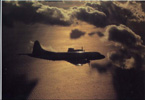
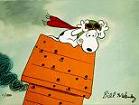


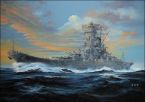












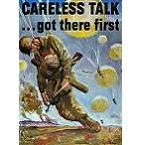




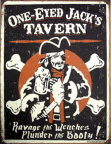


 New Messages
New Messages No New Messages
No New Messages Hot Topic w/ New Messages
Hot Topic w/ New Messages Hot Topic w/o New Messages
Hot Topic w/o New Messages Locked w/ New Messages
Locked w/ New Messages Locked w/o New Messages
Locked w/o New Messages Post New Thread
Post New Thread